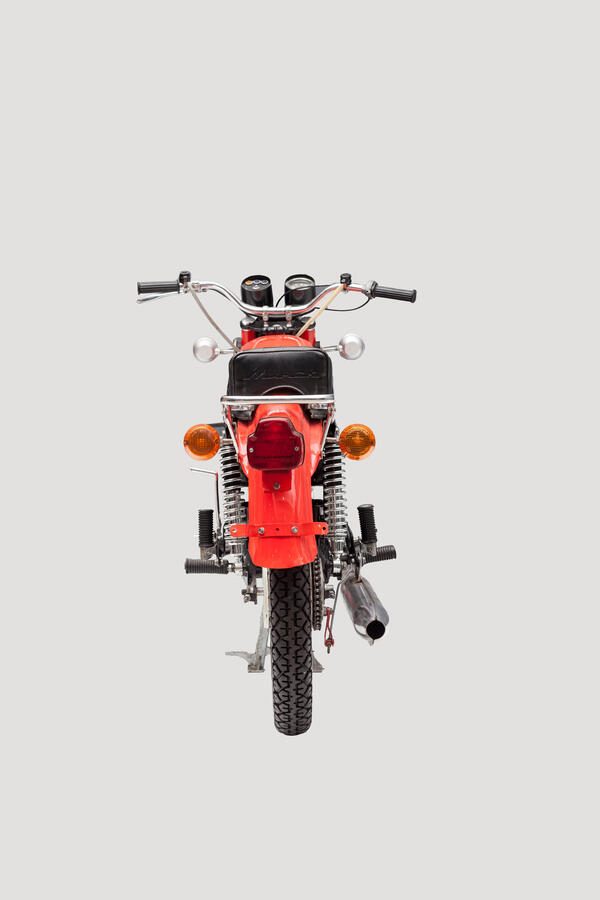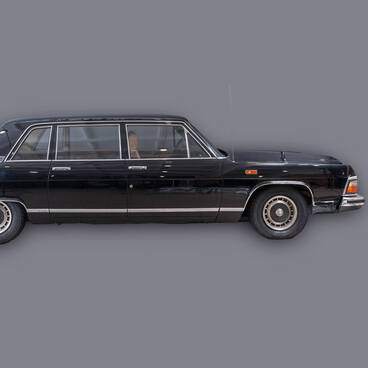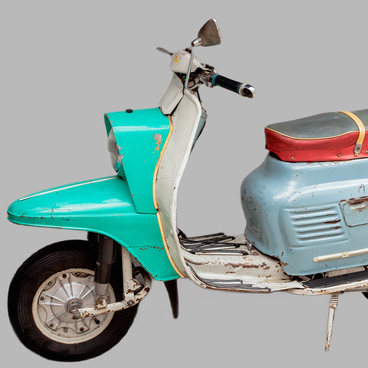For several years, the Minsk Motorcycle and Bicycle Plant (MMVZ) produced only bicycles. In 1951, it released the first motorcycle that was known as the M1A and was a copy of the German motorcycle DKW RT 125. Decree No. 494 of the Ministry of the Automobile and Tractor Industry transferred the production of the M1A motorcycle from Moscow to the Minsk Plant.
The M1A formed the basis for the in-house models of the MMVZ. These were simple and reliable Minsk motorcycles. They gained popularity rapidly both in the Soviet Union and abroad. The motorcycles were exported to 45 countries.
In 1976, at the beginning of the Tenth Five-Year Plan, the personnel of the Minsk Motorcycle and Bicycle Plant started mastering the production of two new motorcycle models. At first, the MMVZ-3.111 Sport was released, and later the updated version known as the MMVZ-3.115.
The equipment of the MMVZ-3.115 was typical of on-road motorcycles. It had the same powertrain, transmission, frame, wheels, suspension, and electrics as its predecessor.
The motorcycle received a high and wide handlebar with new clutch and front brake levers, ensuring a comfortable riding position and easier operation. Frame stiffeners were added to the rear section to improve reliability.
The engineers equipped the wheel bearings with rubber seals, strengthened the rear fork, and used a new spring in the rear wheel shock absorber. To reduce the noise level of the exhaust system, they designed a new muffler.
The motorcycle was equipped with a luggage rack for up to 12 kg of cargo, and a rear-view mirror. The engineers provided the opportunity to mount crash bars and a windshield. The MMVZ-3.115 was light, weighing only 112 kg. It had a carrying capacity of 150 kg.
The single-cylinder gasoline engine had a power of 11 hp and a capacity of 123 cc. The motorcycle had a nominal maximum speed of 95 km/h and a fuel consumption rate of around 4 liters per 100 km. The capacity of the fuel tank was 12 liters. The model was discontinued in 1980.
The M1A formed the basis for the in-house models of the MMVZ. These were simple and reliable Minsk motorcycles. They gained popularity rapidly both in the Soviet Union and abroad. The motorcycles were exported to 45 countries.
In 1976, at the beginning of the Tenth Five-Year Plan, the personnel of the Minsk Motorcycle and Bicycle Plant started mastering the production of two new motorcycle models. At first, the MMVZ-3.111 Sport was released, and later the updated version known as the MMVZ-3.115.
The equipment of the MMVZ-3.115 was typical of on-road motorcycles. It had the same powertrain, transmission, frame, wheels, suspension, and electrics as its predecessor.
The motorcycle received a high and wide handlebar with new clutch and front brake levers, ensuring a comfortable riding position and easier operation. Frame stiffeners were added to the rear section to improve reliability.
The engineers equipped the wheel bearings with rubber seals, strengthened the rear fork, and used a new spring in the rear wheel shock absorber. To reduce the noise level of the exhaust system, they designed a new muffler.
The motorcycle was equipped with a luggage rack for up to 12 kg of cargo, and a rear-view mirror. The engineers provided the opportunity to mount crash bars and a windshield. The MMVZ-3.115 was light, weighing only 112 kg. It had a carrying capacity of 150 kg.
The single-cylinder gasoline engine had a power of 11 hp and a capacity of 123 cc. The motorcycle had a nominal maximum speed of 95 km/h and a fuel consumption rate of around 4 liters per 100 km. The capacity of the fuel tank was 12 liters. The model was discontinued in 1980.




